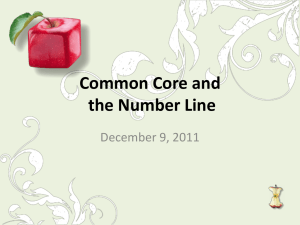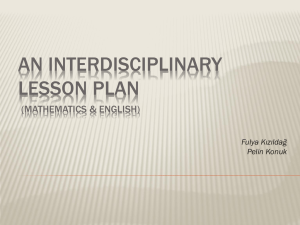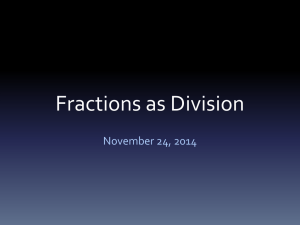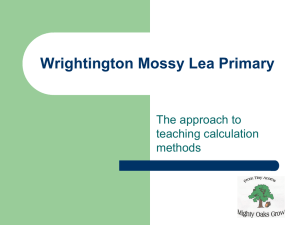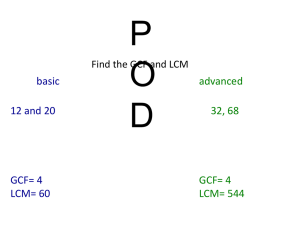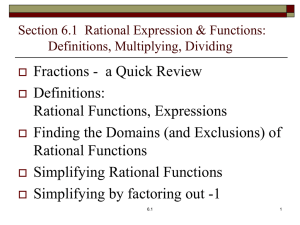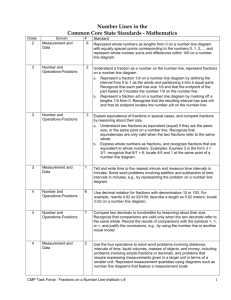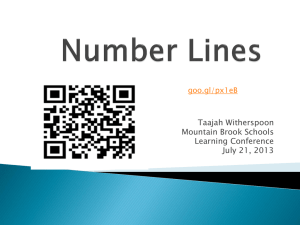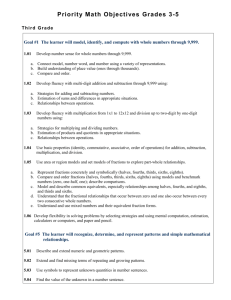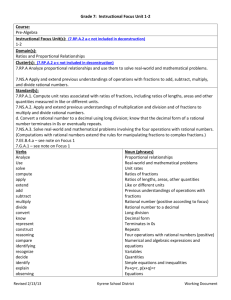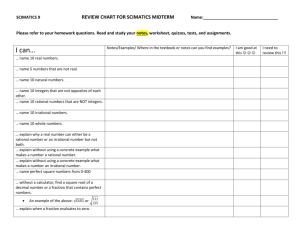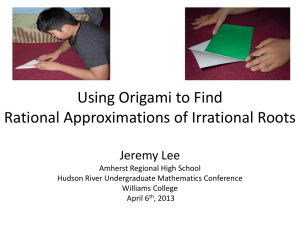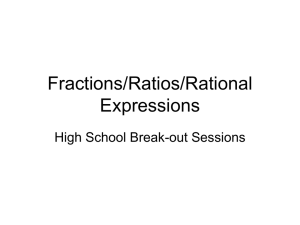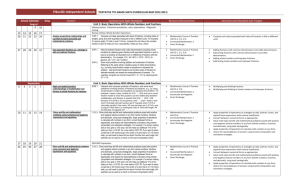Understanding Rational Numbers
advertisement
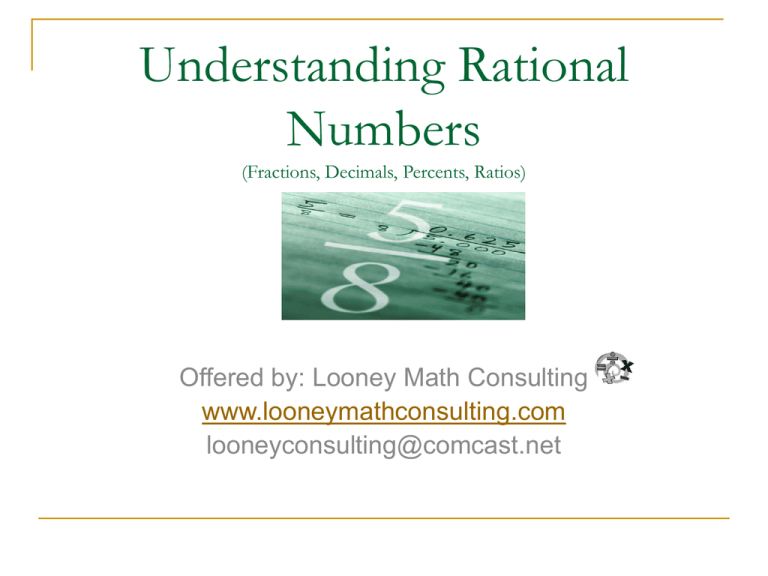
Understanding Rational Numbers (Fractions, Decimals, Percents, Ratios) Offered by: Looney Math Consulting www.looneymathconsulting.com looneyconsulting@comcast.net What will educators learn from the course Understanding Rational Numbers? Educators (both regular and special ed) will: enhance their own mathematics knowledge in the area of rational numbers: fractions, decimals, percents and ratios. better understand why children struggle understanding rational number concepts and will learn how to move children forward. create and interpret assessment tasks for common misconceptions and implement targeted intervention plans. learn how to integrate the use of technology in their classrooms. gain comfort with wide-range of strategies and tools for teaching concepts including the use of visual models and manipulatives . Connecting Content and Pedagogy: Content Definition of rational numbers Representations of fractions and decimal numbers Comparison of fractions and decimal numbers Operations with fractions and decimal numbers Rates, ratio and proportions Probability and Odds Pedagogy Use of models Real World Applications Development of concept and meaning Development of Learning Communities Assessments for Common Misconceptions Intervention plans What is the grade span for this course? Kindergarten through Grade 8: Teachers who teach rational number concepts (Grades 3 – 8) Teachers wishing to enhance their own understanding of rational number concepts and to make connections to foundational concepts taught in early grades (Grades K – 2) Special educators, coaches, administrators Details: Staff: Taught by highly qualified teams of 3 Hours: 40 hours face-to-face instruction / 20 hours on-line (5 face-to-face days) PDPs: 67.5 for course completion / 90 if taken for graduate credit Graduate Credits: 4 available through Endicott College for $240 A Day in Understanding Rational Numbers ……. Participants move between all of the following throughout each day of the course: Whole group instruction, small group, partners Hands-on use of manipulatives Games with a purpose Reading and discussing research articles and case studies Analyzing student work Creating lessons and assessments Using technology Sample Activity Creating Concept Maps Constructing Deep Understanding and Visual Models How is division by one-half different than division by 2? Discuss the relationship of ÷ 2 and x ½. On-line Component Participants required to obtain MassONE ID from district technology coordinator prior to the start of class Use of technology integrated throughout the course in a supportive environment On-line Assignments include: Readings Web-based activities Discussion forums Sample On-line Session Models for Fractions In this session, you will look at various models for representing fractions. Please complete the following assignments: 1. Visit the website PBS - the Fractionator and the Decimal Activities website. 2. Read the article Creating, Naming and Justifying Fractions and Teaching Fractions. 3. Post to the discussion forums by Thursday evening. Respond to one other post by Sunday evening. Session 2 Assignments (Word document ) PBS - the Fractionator file (website) Decimal Activities file (website) Creating, Naming and Justifying Fractions (PDF document ) Teaching Fractions (PDF document) Models for Understanding Fractions (Discussion Forum ) Resources to share back with district: Workshop Reference List Alignment to textbook and standards Assessments Common Misconceptions / student work Technology Questions? Please contact: Dr. Susan Looney Looney Math Consulting looneyconsulting@comcast.net
